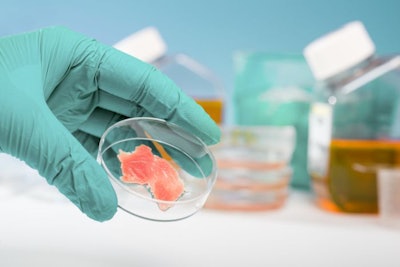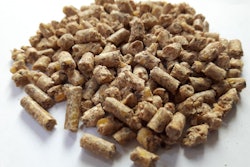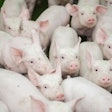
Synthetic biology could provide key to specialized feeds for species not yet domesticated and other applications, experts say.
If a nanoscientist, a fisheries biologist, and a synthetic biologist walk into a bar, what would you get? It may sound like a joke, Anthony Dellinger, president and founding member of Kepley BioSystems, said toward the end of a panel on the use of synthetic biology in feed formulations. But the very real answer, he said, is you get a solution.
As a nanoscientist who works with materials as small a single molecule, Dellinger didn’t expect to end up working in aquaculture. But once he found his way into the field, he saw ample opportunity to apply his skills to raising fish, he told attendees of a panel on synthetic biology, hosted by F3 Future of Fish Feed on May 18.
Kepley BioSystems entered the aquaculture industry, like so many other startups, of reducing reliance on wild-caught feeder fish, Dellinger said. After speaking with fishers working in the industry, they realized their skillset could help solve a particular problem identified by their industry partners: the fishers relied on forage fish to serve as bait to catch larger, higher-value species. So the company set about trying to “reverse engineer” forage fish, hoping to identify the molecules that attracted the fish to the bait in order to build a synthetic alternative in the lab.
It was while pursuing this work, Dellinger said, that Kepley got a rather unusual phone call asking if their artificial bait efforts could be used to create a viable feed for horseshoe crabs. The blood of horseshoe crabs, he explained, is used to determine whether vaccines and other medical products are properly sterilized, making the species extremely valuable. Yet, to date, attempts to raise the crabs in a domestic setting have failed.
“We looked into the literature and found a lot of interesting things that fit our background more than anything we had been working on prior to this,” Dellinger said. Something about the monotony of conventional feeds, and preparation techniques such as freezing and thawing, gradually eroded the health of the horseshoe crabs over time. But constantly mixing a new, fresh diet each day would be too costly to raise even the high-dollar horseshoe crabs, whose blood can sell for $60,000 per liter, Dellinger said.
Building the feed from the molecules up could solve this problem, Dellinger said. They could use the flavor molecules identified in their work on bait to simulate a varied diet for the crabs.
This is the promise of synthetic biology in animal feed, according to panel moderator Chris Oakes, head of business development and strategic alliances in agriculture for Deep Science Ventures. By engineering feed ingredients from the genetic or even molecular level, feed producers could in the future create diets that are fine-tuned to a level that would have been unimaginable in the past.
Feed applications of synthetic biology
For Beta Bugs, an insect-rearing venture, potential applications of bioengineering could have an impact on the feed industry in the relative near term, according to CEO Thomas Farrugia. Where selective breeding once required the observation of visible traits in each generation of offspring, genetic analysis now allows scientists to identify the precise genes they desire. For the time being, he said, this means selecting for faster-growing, more fertile black soldier flies in order to help the insect meal industry scale and cut costs more rapidly. But in the near future, he said, it could mean breeding flies that grow more effectively on food waste, or that have an enhanced ability to accumulate the omega-3 fatty acids present in a seaweed substrate they could be fed.
Longer term, Farrugia said, genetic engineering could allow scientists to go beyond the genes naturally present in black soldier flies to insert, say, the ability to create omega-3 internally, creating a feed ingredient with exceptionally high levels of the valuable nutrient to replace fish oil. Or perhaps scientists could skip the feed entirely by engineering photosynthetic fish, reducing the need for aquafeed, Farrugia suggested.
But selective breeding isn’t the only means scientists have at their disposal when it comes to synthesizing biological compounds, said Yisheng Wu, senior director for Conagen. Her company works to fine tune the process of using genetically engineered microorganisms to produce all manner of food ingredients, from flavors and fragrances to nutrients.
While Conagen works with food and beverage companies, Wu said, she could see a clear feed application where, for example, Dellinger could take the flavor molecules they identified and potentially identify a microorganism that could manufacture it.
“Using microorganisms … we don’t need to extract those ingredients from nature,” Wu said. “For example, one of our ingredients, if we needed to extract it from nature, would require tons of plants to produce one gram of that particular ingredient. We can engineer an entire biosynthetic pathway into a microorganism, feed it glucose and sucrose … and harvest these very expensive, valuable ingredients from the fermentation process.”
















